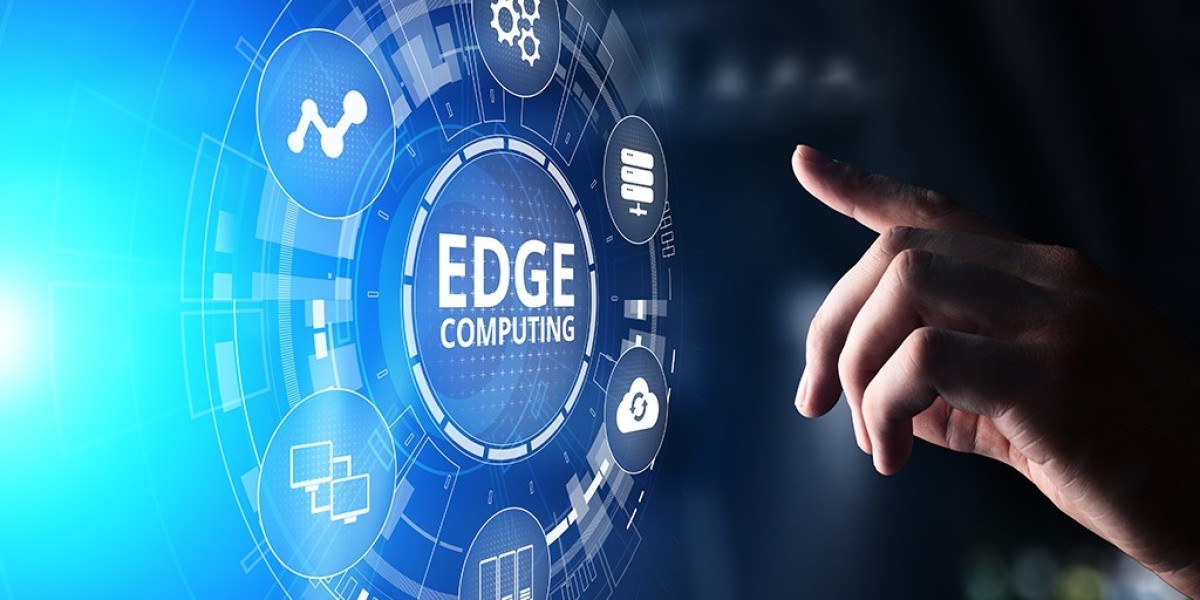The latest report by IMARC Group, titled “Edge Computing Market Report by Component (Hardware, Software, Services), Organization Size (Small and Medium-sized Enterprises (SMEs), Large Enterprises), Vertical (Manufacturing, Energy and Utilities, Government and Defense, BFSI, Telecommunications, Media and Entertainment, Retail and Consumer Goods, Transportation and Logistics, Healthcare and Life Sciences, and Others), and Region 2024-2032“, The global edge computing market size reached US$ 14.7 Billion in 2023. Looking forward, IMARC Group expects the market to reach US$ 90.3 Billion by 2032, exhibiting a growth rate (CAGR) of 24.35% during 2024-2032.
Factors Affecting the Growth of the Edge Computing Industry:
- Significant advancements in Hardware and Software:
The emerging advancements in hardware and software are revolutionizing edge computing, making it more efficient and accessible. Additionally, the development of more powerful edge devices, such as high-performance microprocessors and sensors, enhances the capability to process data locally, reducing latency and improving real-time responsiveness. Along with this, hardware improvements, and advancements in edge computing platforms and software have streamlined the deployment and management of these solutions. Furthermore, sophisticated edge computing platforms now offer better integration, scalability, and ease of use, allowing organizations to deploy edge solutions more cost-effectively. These innovations collectively contribute to the growing adoption of edge computing across various industries, enabling more efficient data handling, reduced operational costs, and improved system performance.
- Growing Healthcare Sector:
The healthcare sector is experiencing significant transformation with the adoption of edge computing technologies, particularly in remote patient monitoring and real-time data analysis. Additionally, wearable devices and medical imaging equipment generate vast amounts of data that require immediate processing and analysis. Moreover, edge computing allows this data to be processed locally, ensuring timely and accurate insights for patient care. For instance, wearables can continuously monitor vital signs and alert healthcare providers in real time if any anomalies are detected, while medical imaging devices can process and analyze images on-site, providing faster diagnostic results. This shift toward real-time data handling enhances the efficiency of healthcare services, improves patient outcomes, and supports proactive management of chronic conditions.
- Automotive Industry Expansion:
The expansion of the automotive industry, particularly with the growing number of autonomous vehicles, is driving significant advancements in edge computing. Additionally, autonomous vehicles rely heavily on processing data from numerous sensors and cameras to navigate and ensure safety. Moreover, edge computing enables these vehicles to analyze data in real time, which is essential for functions such as collision avoidance, adaptive cruise control, and lane-keeping assistance. Besides this, edge computing reduces the time needed to make critical decisions and enhances overall system responsiveness by processing data locally within the vehicle. Hence, this capability is essential for maintaining safety and efficiency in dynamic driving environments. As the automotive industry continues to innovate and expand, the role of edge computing in managing complex data and enhancing vehicle performance becomes increasingly vital, thus contributing to market growth.
Request Sample For PDF Report: https://www.imarcgroup.com/edge-computing-market/requestsample
Competitive Landscape with Key Player:
- ABB Ltd.
- Amazon Web Services (AWS), Inc.
- Cisco Systems Inc.
- Digi International Inc.
- General Electric Company
- Hewlett Packard Enterprise Development LP
- Huawei Technologies Co. Ltd.
- IBM Corporation
- Intel Corporation
- Microsoft Corporation
- SAP SE
- Siemens AG
The report has segmented the market into the following categories:
Breakup by Component:
- Hardware
- Software
- Services
Hardware represents the largest segment, as edge computing relies heavily on physical infrastructure like servers and networking equipment to process data locally.
Breakup by Organization Size:
- Small and Medium-sized Enterprises (SMEs)
- Large Enterprises
Large enterprises dominate the market growth, as they typically have greater resources and more complex data processing needs.
Breakup by Vertical:
- Manufacturing
- Energy and Utilities
- Government and Defense
- BFSI
- Telecommunications
- Media and Entertainment
- Retail and Consumer Goods
- Transportation and Logistics
- Healthcare and Life Sciences
- Others
Energy and utilities hold the largest market share as they benefit significantly from edge computing for real-time monitoring and management of infrastructure, enhancing operational efficiency.
Market Breakup by Region:
- North America (United States, Canada)
- Asia Pacific (China, Japan, India, South Korea, Australia, Indonesia, Others)
- Europe (Germany, France, United Kingdom, Italy, Spain, Russia, Others)
- Latin America (Brazil, Mexico, Others)
- Middle East and Africa
North America’s dominance in the edge computing market is attributed to its advanced technology infrastructure and increasing investment in digital transformation initiatives.
Global Edge Computing Market Trends:
At present, several industries such as healthcare, manufacturing, retail, and transportation are increasingly adopting edge computing to process data closer to the source. This helps reduce latency and improves real-time decision-making. Moreover, the proliferation of IoT devices is a significant driver of edge computing. As more devices generate data, there’s a growing need to process and analyze this data locally to manage bandwidth and improve efficiency. Furthermore, edge computing is being combined with AI and machine learning to enable smarter and more autonomous systems which allows for real-time analytics and decision-making without relying on centralized data centers across the globe.
Note: If you need specific information that is not currently within the scope of the report, we will provide it to you as a part of the customization.
About Us
IMARC Group is a leading market research company that offers management strategy and market research worldwide. We partner with clients in all sectors and regions to identify their highest-value opportunities, address their most critical challenges, and transform their businesses.
IMARC’s information products include major market, scientific, economic and technological developments for business leaders in pharmaceutical, industrial, and high technology organizations. Market forecasts and industry analysis for biotechnology, advanced materials, pharmaceuticals, food and beverage, travel and tourism, nanotechnology and novel processing methods are at the top of the company’s expertise.
Our offerings include comprehensive market intelligence in the form of research reports, production cost reports, feasibility studies, and consulting services. Our team, which includes experienced researchers and analysts from various industries, is dedicated to providing high-quality data and insights to our clientele, ranging from small and medium businesses to Fortune 1000 corporations.
Contact US
IMARC Group
134 N 4th St. Brooklyn, NY 11249, USA
Email: sales@imarcgroup.com
Tel No:(D) +91 120 433 0800
United States: +1-631-791-1145








